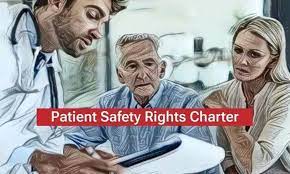First-Ever Patient Safety Rights Charter : WHO

World Health Organization (WHO) launched the first-ever Patient Safety Rights Charter at the Global Ministerial Summit on Patient Safety.
- Assuring patient safety in health care is a critical component in delivering the right to health.
- Patient safety can be compromised due to avoidable errors such as unsafe surgical procedures, medication errors, mis- or late diagnosis, poor injection practices, unsafe blood transfusion and the onset of life-threatening infections such as sepsis and other health care-associated infections.
- Patient Safety Rights Charter outlines the core rights of all patients in the context of the safety of health care and seeks to assist governments and other stakeholders to ensure that the voices of patients are heard and their right to safe health care is protected.
- The Charter covers 10 patient safety rights crucial to mitigate risks and prevent unintentional harm, which includes
- Timely, effective, and appropriate care
- Safe health care processes and practices
- Qualified and competent health workers
- Safe medical products and their safe and rational use
- Safe and secure healthcare facilities
- Dignity, respect, non-discrimination, privacy and confidentiality
- Information, education, and supported decision-making access to medical records
- To be heard and fair resolution
- Patient and family engagement.




